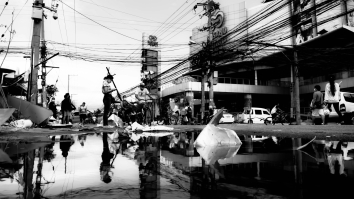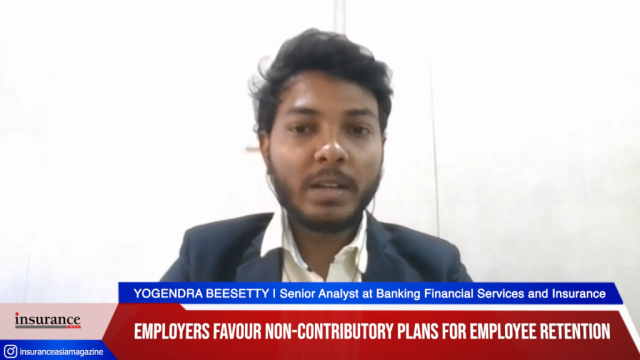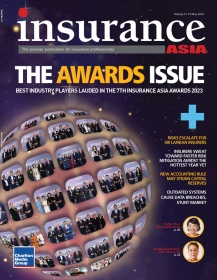How insurers can get their customers to love them
By Harshveer Singh and Henrik NaujoksRetail insurers in Asia Pacific and around the world have a problem: their customers don’t love them, don’t appreciate them, and don’t stay with them. Because customers don’t discern much difference between insurers, companies end up competing largely on price, and that can lead to a downward spiral of cost-cutting, profit erosion, and customer churn. In a word, commoditisation.
But some leading insurers have figured out how to break out of this destructive cycle. In what may look like a paradox, these companies are winning in insurance by offering their customers services beyond insurance. They’re helping their customers live safer, healthier, and more productive lives by providing them with a constellation of non-insurance services known as an ecosystem. These offerings include security sensors for customers’ homes, safe-driving monitors for their cars, as well as fitness club discounts and doctor locator services for their well-being.
Ecosystem services
Whilst insurance-led ecosystems are still relatively new, customers are already big fans. In major markets around the world, more than 80% of insurance customers are interested in, or open to, ecosystem services, according to Bain & Company’s survey of 172,000 property and casualty and life insurance customers in 20 countries, including Australia, China, Hong Kong, Indonesia, Japan, Malaysia, Singapore, and South Korea (Customer Behavior and Loyalty in Insurance: Global Edition 2017). Amongst customers interested in ecosystem services, a majority in all markets are open to having their insurers provide those services.
Insurers can use ecosystem services to confront one of their biggest challenges: connecting with their customers. Insurance is a low-touch business. Most consumers purchase an insurance product only every three to six years. In developed markets, just half of customers have had any contact with their insurers for any reason in the past 12 months. It’s hard to foster loyalty under such circumstances. And it’s no surprise that many customers are ready to defect to an insurer that offers lower prices.
When insurers offer ecosystem services, they increase the frequency of customer interactions. And engaged customers are much more likely to be loyal customers. In the US, for example, home insurance customers whose carriers offer three or more ecosystem services give their companies loyalty scores more than twice as high as customers whose carriers offer no ecosystem services. Loyalty is good for business. Carriers that win the loyalty of their customers find that they stay longer, buy more products, and recommend the company to their friends and colleagues. Higher loyalty means lower churn, and that can help companies reduce costs and expand margins.
Ecosystems are still in their infancy. In most of the countries surveyed, only a minority of customers use at least one or two ecosystem services, and just a tiny fraction use three or more. Still, the results show that insurers that offer ecosystem services not only do better at keeping existing customers, they also have an edge in pulling in new ones.
One indication of how powerful a lure these services can be: In the US, 42% of home insurance customers who are interested in ecosystem services are willing to switch insurers if their own carrier doesn’t provide them. They’re willing to switch and they’re willing to pay. More than a third of US home insurance customers who use ecosystem services say they’re prepared to pay higher premiums for those services.
In addition to bringing in new revenues, ecosystem services have the potential to improve profit margins. Customers whose homes and autos are protected by sensors and monitors are likely to have fewer accidents and, when they do, less damage. That means fewer and smaller claims, which helps the insurer’s bottom line.
Insurers considering building an ecosystem face a series of strategic choices, not to mention some intense competition. As the boundaries between industries blur, non-insurers are jostling with insurers for control of customer interactions. In automotive ecosystems, for example, Volkswagen, Tesla, and other manufacturers offer insurance to car buyers, a strategy for putting the auto companies in command of the critical customer interface.
Insurers that succeed in creating—and leading—an ecosystem make sure they deliver innovative services that are regularly updated and refreshed. They use technology to make it easy for customers to move seamlessly between insurance and noninsurance services. They pick their ecosystem partners with care and drive for scale quickly.
Ecosystems, when done well, can become a virtuous circle—the very opposite of the downward spiral now besetting much of the insurance industry in Asia-Pacific and beyond. With a carefully crafted ecosystem strategy, insurers can expand their offerings, differentiate themselves in the marketplace, build and sustain loyalty, lift profits, and successfully fend off the threat of commoditisation.























 Advertise
Advertise









